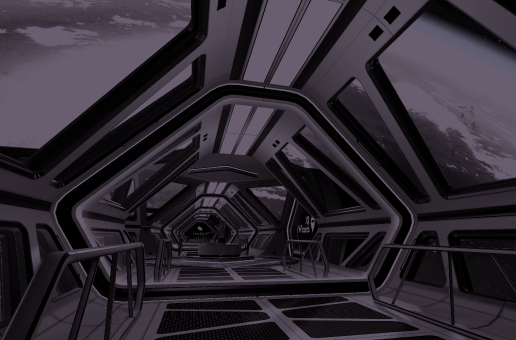Table of Contents:
In only 40 years since the invention of the internet, our technology, and thus our lives, have advanced so far that we can now say that we live in a two-dimensional world. A world that combines the digital sphere with the physical one.
This leads to new phenomena, which we attempt to describe by coining new terms, like omnichannel customer experience or phygital. In this article, we pay attention to the second one and describe it in relation to the Metaverse. Thus, we invite you to read on if it is a topic that sparks your interest.
What Is Phygital?
Let us begin by defining what phygital means. The term comes from the fusion of the words “physical” and “digital,” accurately describing the phenomenon itself. Phygital means the blending of the physical and digital worlds aimed at drawing the best of these two to create the most convenient, intuitive, and pleasurable experience.
An example of the phygital model may be observed in the relationship between brands and Metaverse, where the former shape the latter to their advantage in order to acquire more customers for their physical products.
Phygital Experience
Phygital experience is often mistaken for omnichannel customer experience. It is so since both of these concepts share similarities at many levels. However, there are also aspects in which they differ; therefore, let us look at the idea of phygital customer experience in detail.
In building phygital customer experience, organizations focus on integrating their digital layer with the physical one. They do this to build a stronger relationship with their customers and to leverage the advantages of both worlds. Unlike omnichannel experience, phygital experience does not focus on making products accessible from any place nor creating consistency between all channels in both layers.
Unlock the future with Mazer: Your innovation partner.
Phygital Metaverse
Having described this phenomenon, let us now take a look at the relationship between phygital experience and the Metaverse itself. These two are inherently linked, which is proven by a number of examples.
- Virtual fitting rooms – The first example may be observed in the fashion industry, though its development was significantly accelerated by the COVID-19 pandemic. Virtual fitting rooms are the ideal definition of the phygital experience – they let customers try on their clothes in a digital space only to drive sales in the real world.
- Job interviews and calls – Another way this phygital experience is created is well-known to HR specialists. These utilize the Metaverse mainly for conducting job interviews or calls. Through VR, the whole experience is enhanced, and the communication is more real than during a video call, making it a preferred option for recruiters – although the job itself will take place in the physical world.
- VR/AR classes – Another possibility, one that is expected to grow, for creating a phygital experience is eliminating distractions in education. While many experiments still need to be done physically in class, most of the lectures may be conducted in virtual reality, free of visual distractions and noise. As a result, these phygital lessons are much more effective, letting students learn as much as possible.
The Benefits of a Phygital Approach
Simply analyzing the examples presented above clearly shows that adopting the phygital approach might be quite beneficial – both for the users and the providers. But, to underline this even further, we have created a list of the most crucial advantages that phygital experience brings:
- It is more effective – Since the phygital approach focuses on the best elements from both worlds, it is naturally more effective for both the users/customers and the providers.
- It builds satisfaction – For customers, it is simple – they see no boundaries between the physical and digital worlds, so they are happy because they can merge these two layers seamlessly. For other users, for instance, students, higher satisfaction comes from better results. Nevertheless, phygital experience drives satisfaction, which is so important in the current customer-centric business world.
- It attracts attention – The phygital approach is quite new, but it’s also the inevitable future. Organizations that introduce it right now attract the attention of their target audience and prepare themselves for the future when the phygital approach will not be a strategy – it will be standard.
Phygital: Conclusions
What is phygital? It is the seamless integration of the physical and digital worlds. It comes with numerous advantages for organizations and individuals. Phygital experience is already created by businesses that utilize, among others, the Metaverse for this purpose. What is the future of this approach? Most likely, it will become a standard.
You may also read: Metaverse Vs Multiverse: The Differences Explained
What is the definition of “Phygital”?
Phygital is a term derived from the fusion of “physical” and “digital,” signifying the seamless blending of the physical and digital worlds to create a convenient, intuitive, and pleasurable experience.
How does Phygital experience differ from omnichannel customer experience?
Phygital experience involves integrating the digital and physical layers to enhance the user’s experience, while omnichannel focuses on product accessibility and consistency across channels. They share similarities but differ in their core objectives.
What are the benefits of adopting a Phygital approach?
Adopting the Phygital approach offers several advantages. It is more effective, builds satisfaction for users, attracts attention from the target audience, and prepares organizations for the future where the Phygital approach becomes the standard.
Unlock the future with Mazer: Your innovation partner.








